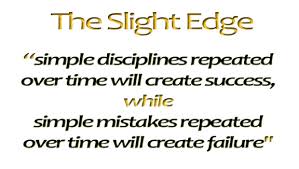As we are nearing the end of January, hopefully you have done or are planning to conduct an inventory of your community’s strengths, weaknesses, accomplishments and, perhaps, things that just did not get done over the past year. Taking this inventory into consideration and looking forward, do you have a plan for 2014? Have you set short term and long term goals and outlined specifically how you plan to achieve those goals?
When planning your capital budget spending for 2014, you may think you can avoid or delay some expenditures or improvements that may not seem to affect you in the short run. But, are you really giving consideration to what putting off capital upgrades/repairs/improvements might cost you in the long run? While some improvements might seem to be unnecessary, they could be vital to the continued viability and success of your community – particularly from the perspective of future prospects who will be visiting your community.
As Jim Moore states:
“Up to 20 percent of older communities across the United States may no longer be able to effectively serve their future residents while being truly competitive in the marketplace. This is especially true in market areas that compete with newer, state-of-the-art buildings. The term “older, functionally obsolete community” does not necessarily mean a facility that has been operating for 15 to 20 years. Some five-year-old communities can have serious obsolescence and deferred maintenance problems.”
Upgrades/Cosmetics – While your community may be functional and livable, is it attractive and does it present a favorable first impression? Will your community show well as compared to the competition in your market area? Putting off some upgrades could make your community look “old” and send potential new residents looking elsewhere.
Repairs/Replacements – While some repairs and replacement purchases can seem expensive, will the long run benefits outweigh the short run costs? For example, will it prevent a complete breakdown of important operating systems such as the heating & air conditioning systems, the resident’s elevator or the ability to provide an efficient and quality food and beverage operation? Should operational efficiencies be improved with new equipment in the short run that will save money over the long run?
So, is the question “to spend or not to spend” or should it be how do we spend the right amount of money at the right time? Prudent capital budget planning involves optimizing financial returns to the owner/operator while delivering positive impressions and tangible benefits to both the current and future new residents.
On our next Financial Friday post we will outline 7 steps to the capital budgeting process.
Much of this information is taken from Jim Moore’s book Independent Living and CCRC’s; Survival, Success & Profitability Strategies for Not-for-Profit Sponsors and For-Profit Owner/Operators.
If you are concerned about your capital spending plan and how it affects YOUR community, contact MDS to schedule your consultation to make sure your community is on track for the future.















